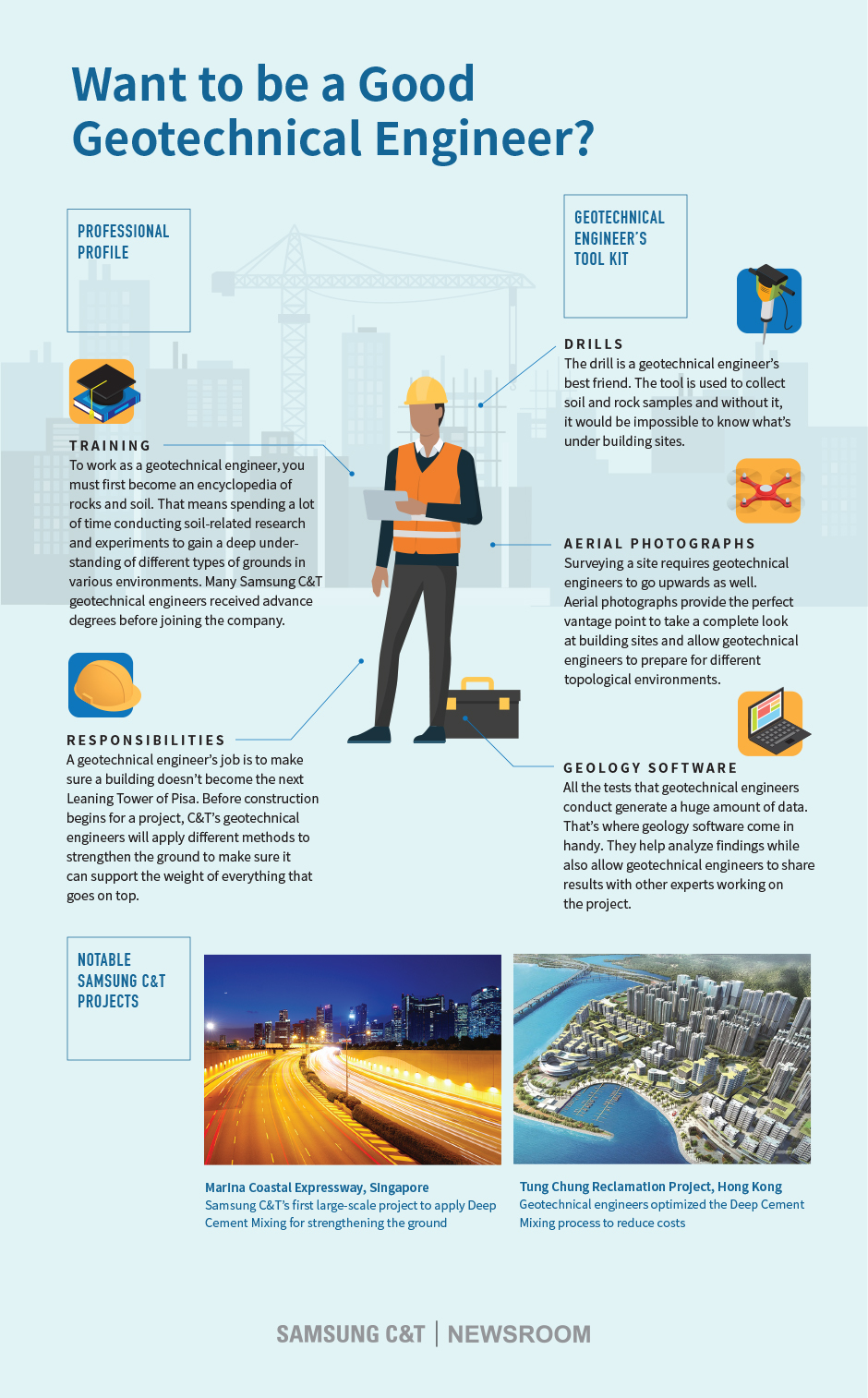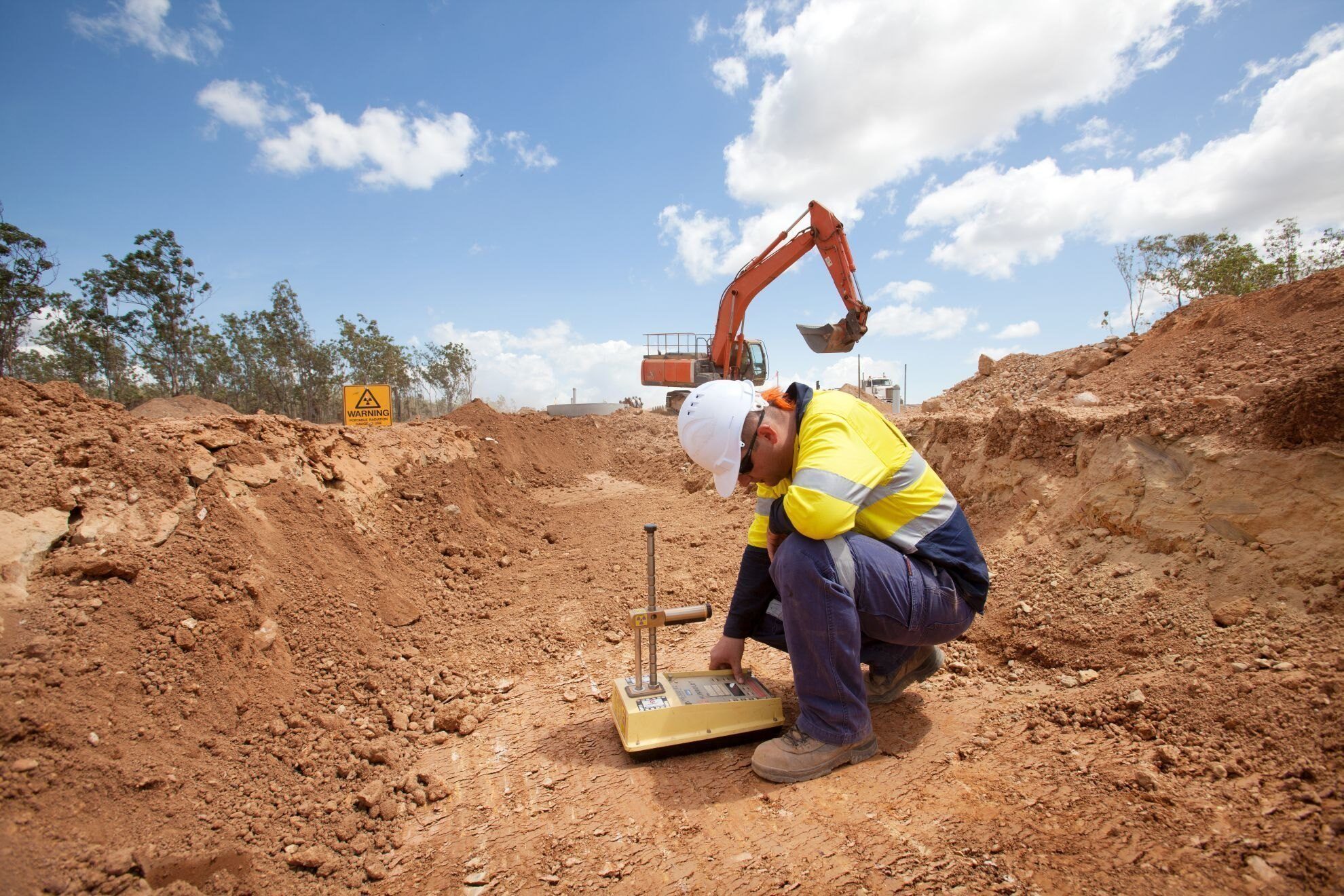Getting The Geotechnical Engineering For Construction Projects To Work
Getting The Geotechnical Engineering For Construction Projects To Work
Blog Article
Geotechnical Engineering For Construction Projects Can Be Fun For Anyone
Table of ContentsSome Known Details About Geotechnical Engineering For Construction Projects How Geotechnical Engineering For Construction Projects can Save You Time, Stress, and Money.The Buzz on Geotechnical Engineering For Construction ProjectsThe Best Guide To Geotechnical Engineering For Construction ProjectsGeotechnical Engineering For Construction Projects Fundamentals ExplainedGeotechnical Engineering For Construction Projects - QuestionsThe Ultimate Guide To Geotechnical Engineering For Construction Projects
Concepts and Method of Ground Enhancement. Ground Improvement Concepts And Applications In Asia. Style evaluation in rock technicians.Cengage Knowing, Stamford, 666 p. Atkinson, J., 2007. The auto mechanics of dirts and foundations. Taylor & Francis, N.Y., 442 p. Drifting Offshore Wind Turbines: Reactions in a Sea state Pareto Ideal Layouts and Financial Analysis, P. Sclavounos et al., October 2007. Nicholson, D, Tse, C and Cent, C. (1999 ). The Observational Approach in ground design principles and applications.
The Single Strategy To Use For Geotechnical Engineering For Construction Projects
Lab and field screening plays a crucial duty in this procedure. By extracting examples from the planet's subsurface and using a collection of examinations, geotechnical engineers can anticipate the practices of soil layers and evaluate their viability for various building and construction endeavours. The significance of geotechnical engineering in civil engineering can not be overemphasized, attributable to a number of elements: The first action in any kind of geotechnical research study entails determining the soil kind at the building website.
The structure acts as the bedrock of any type of building and construction job. Picking the ideal structure type is a choice that hinges on the extensive analysis offered by geotechnical engineering.

Geotechnical site examination is an important step in the preparation and execution of any building project. It includes the collection and analysis of information associated with the physical homes of dirt and rock beneath a recommended building website. This information is vital for the style and construction of safe, steady, and lasting frameworks.
The Single Strategy To Use For Geotechnical Engineering For Construction Projects
In this blog site, we will look into the significance of geotechnical website investigation, its numerous elements, and exactly how it benefits construction tasks. Geotechnical website investigation, likewise referred to as subsurface expedition, includes a collection of tasks focused on identifying the dirt, rock, and groundwater problems at a construction website. The key goals are to recognize prospective geotechnical dangers, examine the design properties of subsurface products, and provide suggestions for the style and construction of structures, retaining wall surfaces, and various other frameworks.
This might consist of geological maps, aerial photos, previous examination records, and historic information. The workdesk research aids in recognizing possible geotechnical problems and planning the subsequent fieldwork. Following the desk research study, a website reconnaissance is performed to visually examine the site and its surroundings. This entails observing the topography, drain patterns, existing frameworks, plant life, and any signs of instability or disintegration.
All About Geotechnical Engineering For Construction Projects
Superficial examination pits are dug deep into to straight observe and example the soil and rock. This approach works for examining the top layers of the subsurface and identifying near-surface risks. Non-invasive geophysical techniques, such as seismic refraction, ground-penetrating radar (GPR), and electric resistivity tomography (ERT), are utilized to map subsurface conditions and spot abnormalities.
Dirt and rock samples collected throughout the field investigation are subjected to laboratory testing to determine their physical and mechanical residential properties. These examinations provide essential data for geotechnical evaluation and layout.
The key benefit of geotechnical website examination is making certain the safety and stability of structures. By comprehending about his the subsurface conditions, engineers can make foundations and other architectural components that can stand up to the lots and ecological pressures they will undergo. This reduces the risk of settlement, decrease, and structural failure.
Facts About Geotechnical Engineering For Construction Projects Uncovered
Comprehending dirt features can assist the choice of excavation methods, dewatering techniques, and ground renovation actions. This guarantees effective and secure building and construction practices. Geotechnical website examinations are typically called for by developing codes and policies. Adhering to these demands guarantees conformity with legal and security requirements, avoiding possible lawful responsibilities and project delays.
This info is indispensable for task supervisors, engineers, and contractors in establishing realistic timetables, budget plans, and contingency strategies. Geotechnical Engineering for Construction Projects. Skyscraper Structure in a Coastal AreaIn a seaside city, a high-rise residential building was intended on a site with thought loosened sand down payments and a high water table. A detailed geotechnical investigation, consisting of borehole exploration, CPT, and geophysical surveys, was performed
A Biased View of Geotechnical Engineering For Construction Projects
Based upon these findings, the structure design was changed to include deep stack foundations expanding into stable strata, and ground renovation strategies, such as vibro-compaction, were applied to reduce liquefaction dangers. This positive approach made sure the safety and security and stability of the structure while staying clear of costly post-construction remediation. Framework Growth on a Sloping TerrainA significant infrastructure project, including the building and construction of a highway and bridges, was intended on an uneven surface with high inclines.

The Leaning Tower of Pisa (Italy), an iconic building wonder, is notorious for its unintended tilt from considerable geotechnical concerns. The tower's structure was inadequately created to handle the soft, unpredictable dirt underneath it, resulting in uneven settlement and its distinctive lean. Our world is dotted with impressive facilities projectsfrom towering skyscrapers to stretching bridgesall standing statement to the development of the numerous building and construction equipment and methods available.
Geotechnical design is a specific field within civil engineering that concentrates on researching the actions of planet products. This branch dives deep into the groundinvestigating just how the soil, rock, and groundwater at a building and construction website can influenceand be affected bythe infrastructure that we set up on and right into them. Before a single block is laid or a concrete structure poured, geotechnical engineers probe into the earthgathering vital data concerning the website's soil make-up, rock structure, and groundwater levels.
The 10-Minute Rule for Geotechnical Engineering For Construction Projects

is a device used to assess the integrity and load-bearing try this out ability of heaps during setup, leveraging the concept of over here wave proliferation. It optimizes building and construction effectiveness by giving real-time assessments, hence guaranteeing secure and efficient stack foundations. Among the functional applications of geotechnical design entails deciding and performing the ideal approaches for foundation construction.
Pile driving stands for greater than the simple act of putting architectural components right into the ground. However, it is a thoroughly coordinated process of transferring a structure's tons past the less stable dirt layers better to the surfacedown to the a lot more considerable strata that lie beneath. In the situation of heap driving, consider how geotechnical engineers skillfully use this method to evenly disperse the structure's weight.
Report this page